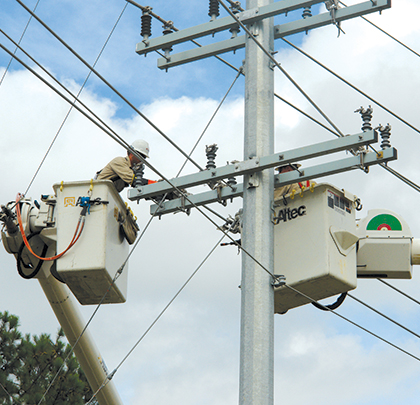Falls are the leading cause of injury and death in work-related accidents. When a fall hazard exists, fall protection equipment is necessary to protect the worker by incorporating personal fall arrest systems. But do we always follow the rules? Do we have little bad habits that prevent us from being safe? Have you heard about those certain fall protection myths or misconceptions? Hopefully, by reading this article, some myths or misconceptions will be resolved. Fall protection standards and regulations can start to fade and be swapped to personal beliefs acquired on the job.
THE 6-FOOT RULE
The two-step rule, or some know it as the 6-foot rule, is the understanding that if someone works 6 feet or more from the edge of a building or structure, they do not need any type of fall protection. After review, OSHA has announced that no distance is a safe distance from an unprotected edge. OSHA requires employers to provide employees fall prevention, such as guard rails, nets, or a PFAS (personal fall arrest system).
5-YEAR EQUIPMENT LIFE
One big myth in the fall protection world is that your equipment has a service life of 5 years. For several years, ANSI A10.32 construction standard stated fall protection equipment must be held to the standard of having a 5-year service life. This standard lasted until it was changed in 2012. After this was changed, all fall protection did not have retirement dates. The product service life is now determined with thorough inspections. Fall protection equipment needs to be evaluated by a competent person at least twice a year and meet manufacturer specifications. Some products, like self retracting devices (SRD), must be returned to the manufacturer for inspection.
PORTABLE LADDER MISCONCEPTION
The misconception is related to the belief that no fall protection is required when using portable ladders. While OSHA has no industry standards pertaining to portable ladders, ANSI says that the employee must descend and reposition the ladder if the employee will have to over reach. OSHA mentions no fall protection is required as long as the employee is working with the envelope. The envelope of a ladder is basically the instructions of how to use a ladder. The six characteristics are: 4:1 climbing angle, face the ladder when climbing, tie the ladder off to prevent slippage, make sure ladder has a solid footing, employee must maintain 3-point contact when climbing, and keep center of gravity.
RESCUE PLAN MISCONCEPTION
Many employees may think that calling 911 after a fall is the solution. Well … that doesn’t always work. The employers must have a Rescue Plan in place with all crews, at all locations. As stated by OSHA, “The employer shall provide for prompt rescue of employees in the event of a fall or shall assure that employees are able to rescue themselves.” Suspension trauma can be potentially fatal and is not a myth. Some people believe you have a suspension tolerance of only 14 minutes before the body starts to feel the effects of circulation loss. What’s your plan?
CONCLUSION
In conclusion, employers and employees must be proactive against potential fall risks and danger. Employers need to set up a rescue plan for each job, because every jobsite is not the same. There are many different dangers that are potential at each site. Many employers become very frustrated with the costs pertaining to the many personal fall arrest systems (PFAS), meetings, planning, and training that is involved in maintaining a safe work environment.
With proper planning, training, and fall arrest systems, employers can be proactive and be part of reducing the number of deaths and injuries caused by falls. ■
About The Author
Caleb Tubbs is the director of marketing and sales at Elk River, Inc., a manufacturer of fall protection equipment. Elk River has been in business 26 years producing quality USA products, which strictly follow ANSI and OSHA standards. At Elk River, you will always speak with a veteran customer service team that is available to answer any questions you may have about fall protection or situations where fall protection may be needed. For more about Elk River, call 800.633.3954, or visit www.elkriver.com.
Modern Contractor Solutions, December 2014
Did you enjoy this article?
Subscribe to the FREE Digital Edition of Modern Contractor Solutions Magazine!



